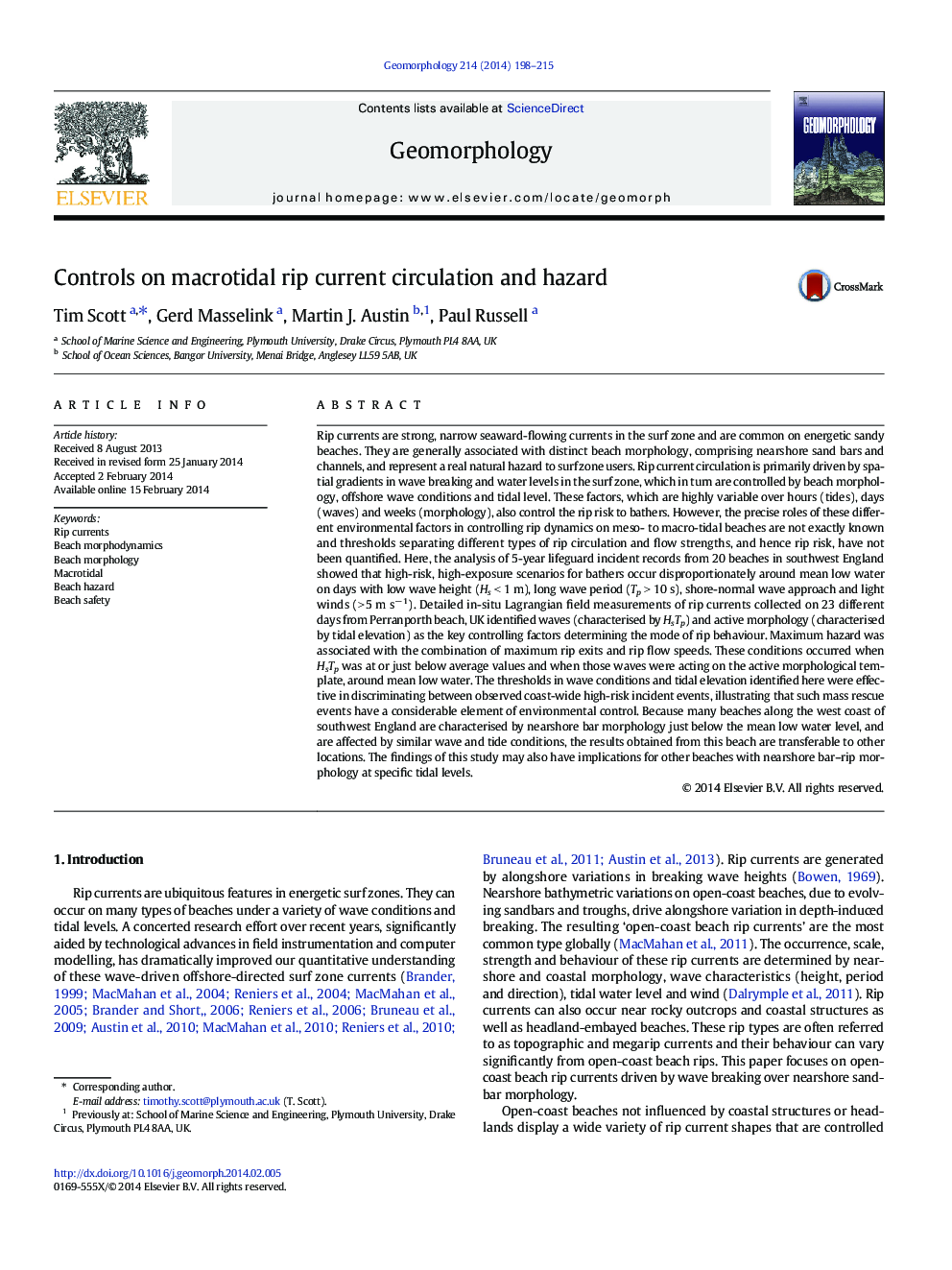| کد مقاله | کد نشریه | سال انتشار | مقاله انگلیسی | نسخه تمام متن |
|---|---|---|---|---|
| 6432551 | 1635435 | 2014 | 18 صفحه PDF | دانلود رایگان |
- Measurements of rip currents identify key factors controlling circulation and hazard.
- Deviations from mean wave and tidal levels can control rip behavior and hazard.
- Maximum hazard is associated with a maximal combination of rip exits and flow speeds.
- Thresholds in wave and tidal conditions effectively discriminate mass rescue events.
Rip currents are strong, narrow seaward-flowing currents in the surf zone and are common on energetic sandy beaches. They are generally associated with distinct beach morphology, comprising nearshore sand bars and channels, and represent a real natural hazard to surf zone users. Rip current circulation is primarily driven by spatial gradients in wave breaking and water levels in the surf zone, which in turn are controlled by beach morphology, offshore wave conditions and tidal level. These factors, which are highly variable over hours (tides), days (waves) and weeks (morphology), also control the rip risk to bathers. However, the precise roles of these different environmental factors in controlling rip dynamics on meso- to macro-tidal beaches are not exactly known and thresholds separating different types of rip circulation and flow strengths, and hence rip risk, have not been quantified. Here, the analysis of 5-year lifeguard incident records from 20 beaches in southwest England showed that high-risk, high-exposure scenarios for bathers occur disproportionately around mean low water on days with low wave height (Hs < 1 m), long wave period (Tp > 10 s), shore-normal wave approach and light winds (> 5 m sâ 1). Detailed in-situ Lagrangian field measurements of rip currents collected on 23 different days from Perranporth beach, UK identified waves (characterised by HsTp) and active morphology (characterised by tidal elevation) as the key controlling factors determining the mode of rip behaviour. Maximum hazard was associated with the combination of maximum rip exits and rip flow speeds. These conditions occurred when HsTp was at or just below average values and when those waves were acting on the active morphological template, around mean low water. The thresholds in wave conditions and tidal elevation identified here were effective in discriminating between observed coast-wide high-risk incident events, illustrating that such mass rescue events have a considerable element of environmental control. Because many beaches along the west coast of southwest England are characterised by nearshore bar morphology just below the mean low water level, and are affected by similar wave and tide conditions, the results obtained from this beach are transferable to other locations. The findings of this study may also have implications for other beaches with nearshore bar-rip morphology at specific tidal levels.
Journal: Geomorphology - Volume 214, 1 June 2014, Pages 198-215
